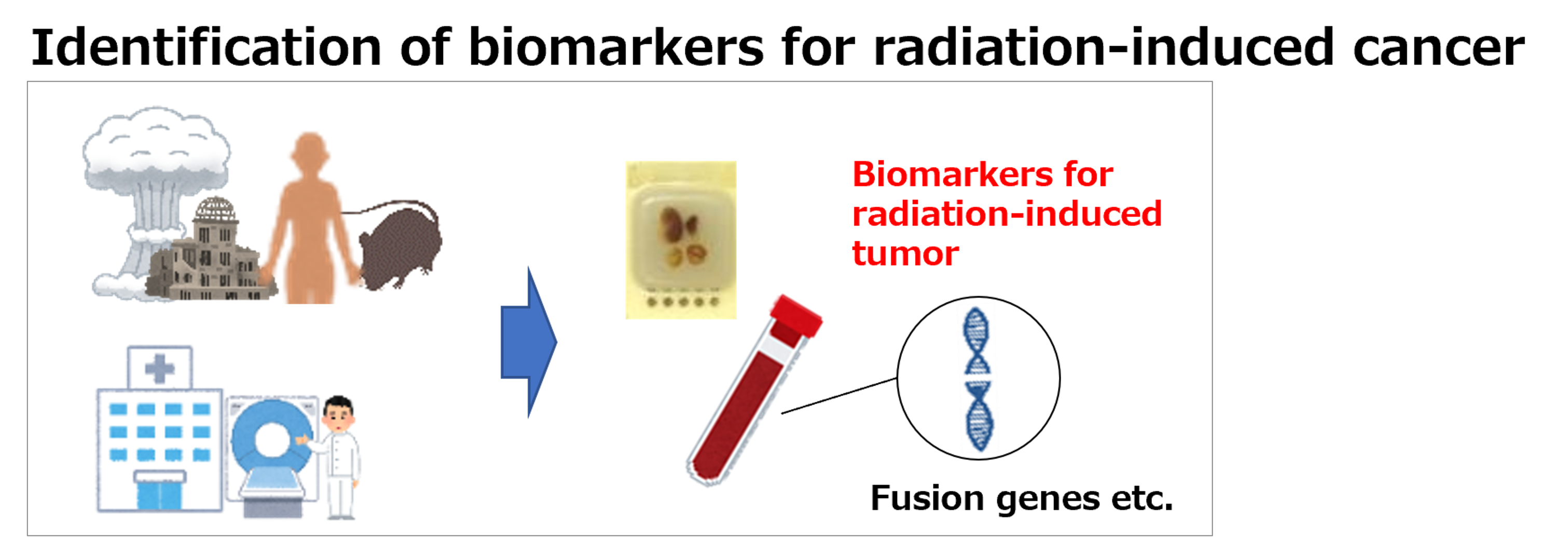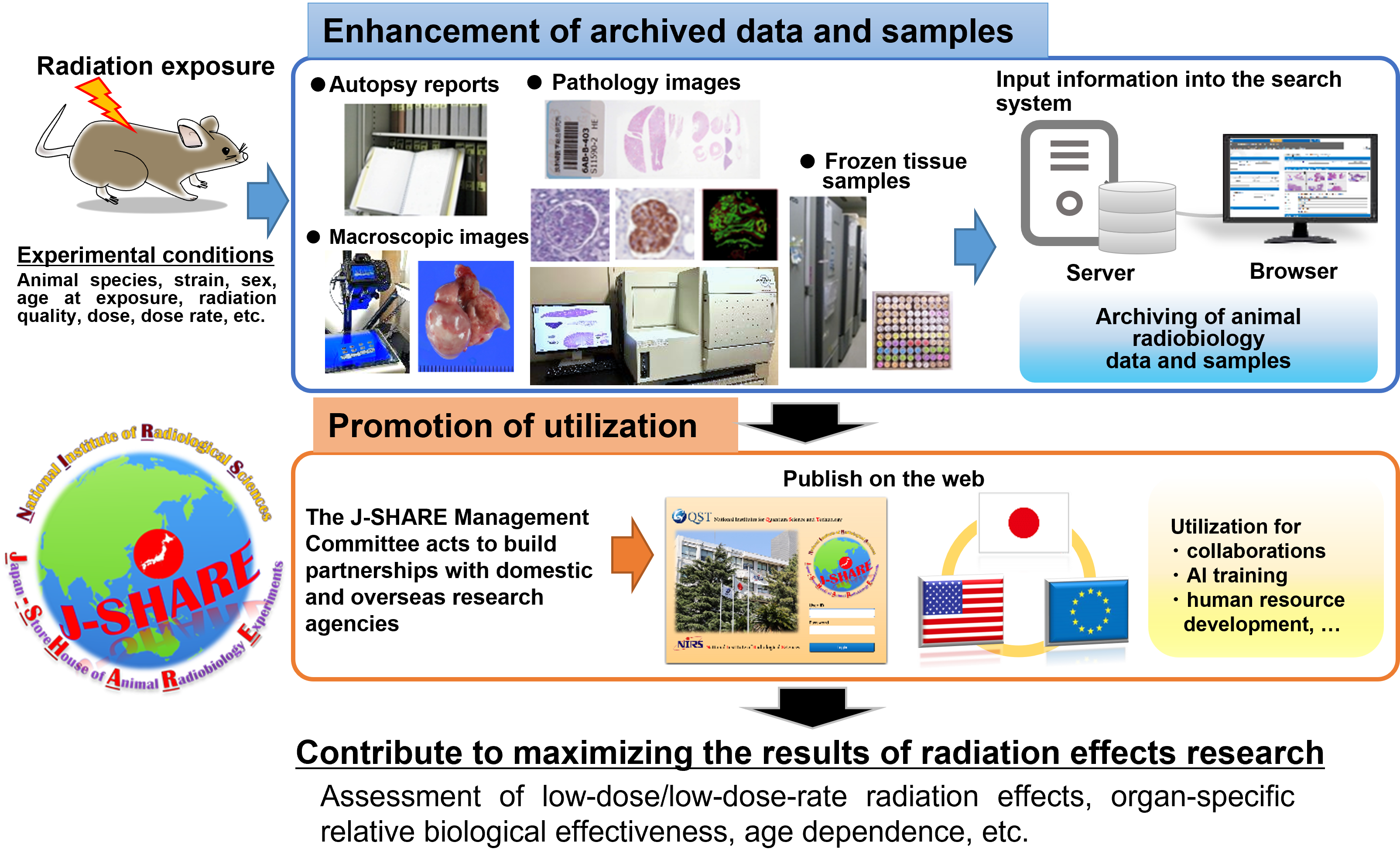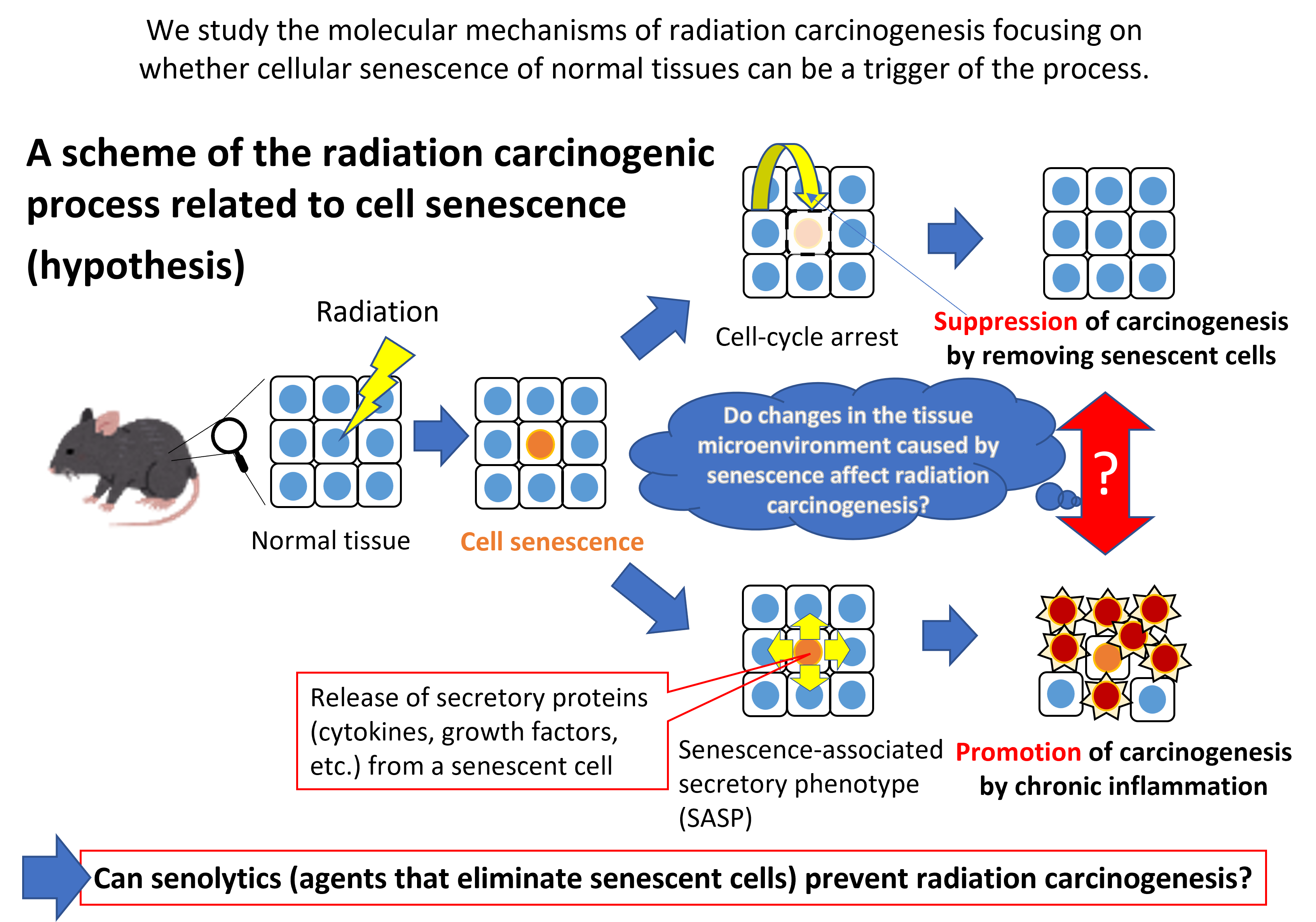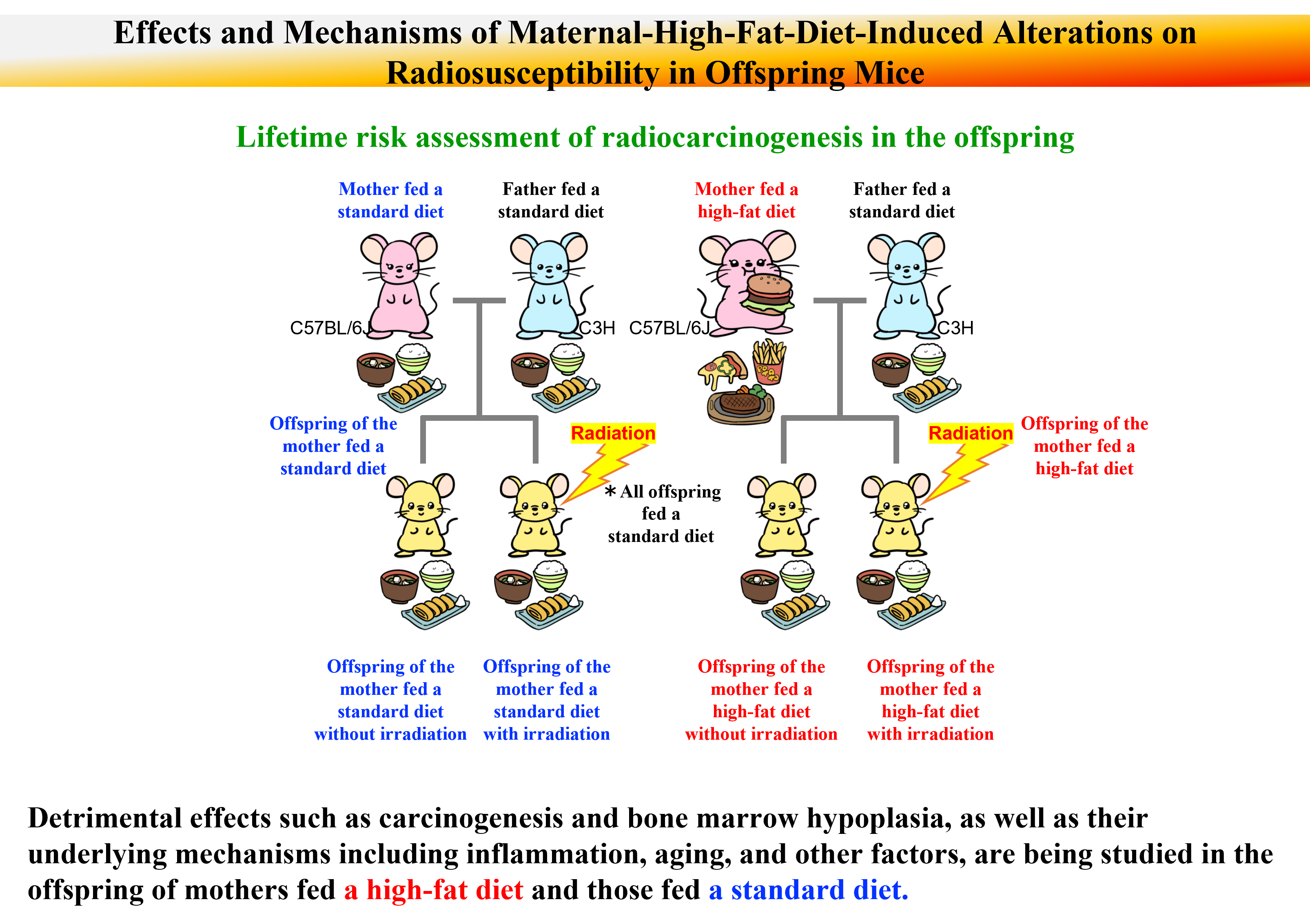The Department of Radiation Effects Research is conducting research by four groups in order to properly understand the effects of radiation on health (especially cancer risk) and to find new knowledge necessary to prevent the effects.
QST has an advantage in radiation effects research utilizing its animal experiment facilities, where various types of radiation exposure can be performed. The Department conducts research on radiation effects from the cellular to the organismal level by integrating the cutting-edge life sciences, aiming for a scientific understanding integrated with the knowledge of radiation effects in humans. Specific studies include: exploration and application of biomarkers closely related to the mechanisms of radiation effects leading to elucidation of low-dose effects and risk assessment; use of mathematical models to extrapolate biological findings to human radiation risk; elucidation of the importance of cellular senescence and inflammation in the mechanisms of radiation effects with a view to their prevention; and research on the mechanism of inherited susceptibility to radiation-induced diseases with a view to their prevention. Through these efforts, we aim to elucidate the mechanisms of radiation effects, extrapolate the findings to human radiation risks, and develop preventive methods.
Biomaker Research Group
This Group conducts research to identify biomarkers of cancer attributable to radiation exposure with the aim of assessing the radiation risk of cancer. Epidemiological studies have shown that radiation exposure is a risk factor for cancer in human populations. On the other hand, conventional research methods cannot distinguish between cancers caused by radiation exposure and those caused by other factors. Therefore, it is difficult to accurately assess cancer risk when the number of people exposed to radiation is small or when radiation dose and dose rate are low. This Group conducts research to overcome this difficulty by developing biomarkers that can identify cancers caused by radiation exposure. QST has shown in various animal models that cancer driver mutations caused by interstitial chromosomal deletion are a potential biomarker for cancers arising after radiation exposure. This Group further develops other biomarkers such as fusion genes and their application to humans.

Archive Utilization and Risk Model Research Group
The Japan Storehouse of Animal Radiobiology Experiments (J-SHARE) is an archive of data and biological samples from huge animal experiments, which were conducted by taking advantage of unique facilities in QST. This Group plays the administrative role in publicization of these data and samples and, further, leverages them to construct a radiation risk model and to search for factors that reduce risk. The Group has been archiving data and samples of mice and rats obtained in studies on the effects of radiation on life span, breast cancer, and lung cancer and their modification by age at exposure, radiation quality, and exposure regimens (single, fractionated, and continuous low-dose-rate exposures). Using this archive, the Group will continue to evaluate radiation risks, extrapolate the results to humans, study the prevention of radiation effects, understand the mechanisms of radiation effects, develop mathematical models of risks, and understand radiation risks across humans and animals.

Senescence and Inflammation Research Group
The Group investigates the role of cellular senescence, inflammation, and other changes in radiation carcinogenesis. Studies, primarily those on cultured cells, have shown that radiation exposure causes premature cellular senescence. However, its role in radiation carcinogenesis has not been elucidated at the organismal level. Two major functions of cellular senescence are possible from the viewpoint of carcinogenesis. One function is to suppress carcinogenesis by inducing senescence of cells having an excessive proliferative capacity. The other function is to stimulate carcinogenesis by inducing chronic inflammation through the secretion of various inflammation-associated proteins (SASP) that affect the cells of cancer origin and their surroundings (i.e., the tissue microenvironment). Therefore, the Group investigates the role of SASP and inflammation in cells of cancer origin and tissue microenvironment after radiation exposure by using mice in which cell lineage can be traced and by experiments to visualize cellular senescence. The results will lead to the possibility of preventing radiation carcinogenesis through drugs such as senolytics (drugs that eliminate senescent cells).

Genetic Susceptibility Research Group
This Group investigates the mechanism of susceptibility to radiation-induced diseases from the unique perspective that the effects of dietary habits are transmitted from one generation to the next. Regular and nutritionally balanced dietary habits maintain and promote health, while disordered dietary habits (insufficient/unbalanced nutrition and overeating) can lead to lifestyle-related diseases. Under- and over-nutrition of pregnant mothers is known to increase the risk of metabolic syndrome, osteoporosis, breast cancer, and other diseases in their children. Therefore, the Group uses laboratory mice to examine whether there is any difference in the manifestation (type and prevalence of the disease) of radiation effects (cancer and other diseases) in children born to mothers who became obese due to excessive caloric intake during pregnancy. The Group also investigates the mechanisms of these diseases from the viewpoints of inflammation and senescence. The results obtained from this research will be useful for the construction of a detailed radiological protection system that takes lifestyle into consideration and for the prevention of radiation effects.

J-SHARE
QST conducted many large-scale animal experiments on radiation effects in childhood and at low dose rates. In this process, it has preserved a vast amount of experimental data and biological specimens from animal experiments. To organize and utilize these valuable data and samples, the Department is conducting the Japan Storehouse of Animal Radiobiology Experiments (J-SHARE) project. J-SHARE is open to Japanese and overseas research institutions. With a view to collaborating with external archives such as NURA (USA) and STORE (Europe), the Department will continue to maximize the results of radiation effects research through collaborations.
PLANET (more)
The Planning and Acting Network for Low Dose Radiation Research (PLANET), which is composed of experts in radiological protection and low dose radiation effects, started its activities in 2017 with the aim of establishing a framework to reflect scientific knowledge on low dose and low dose rate radiation risks in domestic radiological protection standards. PLANET aims to collect and analyze information on low-dose and low-dose-rate radiation exposure, propose strategic studies to improve uncertainty in risk assessment, and support collaboration among researchers.
Collaborations
The Department welcomes joint research projects that are in line with the Department's objectives. Please contact us at radeff [at] qst.go.jp (replace [at] with @) if you are interested in working with us.






